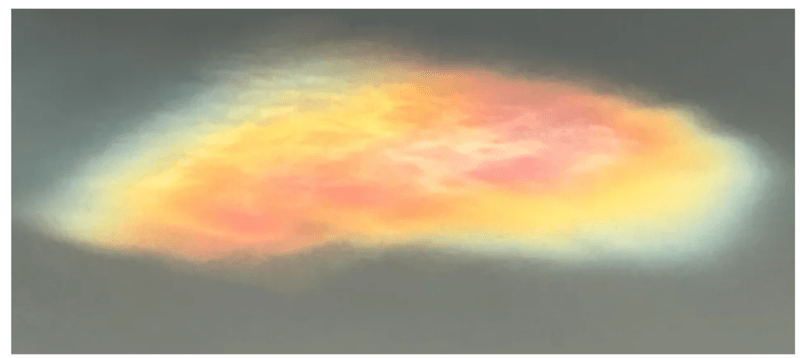News Excerpt:
The shimmering colours of nacreous clouds were spotted in Scotland recently.
About Nacreous Clouds:
- Nacreous clouds form in the lower stratosphere over polar regions when the Sun is just below the horizon.
- The clouds are illuminated from below and often glow in vivid colors.
- It is one of the highest clouds in our atmosphere (around 12-19 miles or 19-31km high, far above normal clouds.)
- They are found in the high latitudes of both hemispheres during the winter. They are often lenticular in shape.
- They are often referred to as "mother-of-pearl".
- It is formed in the air that is around -80 degrees Celsius, tiny ice crystals reflect sunlight, giving the cloud pearly colours - the reason why it is also called mother-of-pearl.
- They are mostly seen a couple of hours either side of sunset or sunrise and, being so high, they are still lit by sunlight which makes them appear even brighter in our evening sky.
- Because of the height and temperature needed this cloud is also known as Polar Stratospheric Cloud.
- Nacreous clouds are classified into three types, Ia, Ib, and II, according to their chemical composition, height, and ambient temperature.

How do Nacreous clouds form?
- The ice particles that form nacreous clouds are much smaller than those that form more common clouds.
- These smaller particles scatter light differently, which is what creates the distinctive luminescent appearance.
- Due to their high altitude and the curvature of the Earth’s surface, these clouds are lit up by sunlight from below the horizon and reflect it to the ground, shining brightly well before dawn and after dusk.
- They are most likely to be viewed when the Sun is between 1º and 6º below the horizon and in places with higher latitudes, such as Scandinavia and northern Canada.
- They only form below -78 °C so are most likely to occur during the polar winter.


